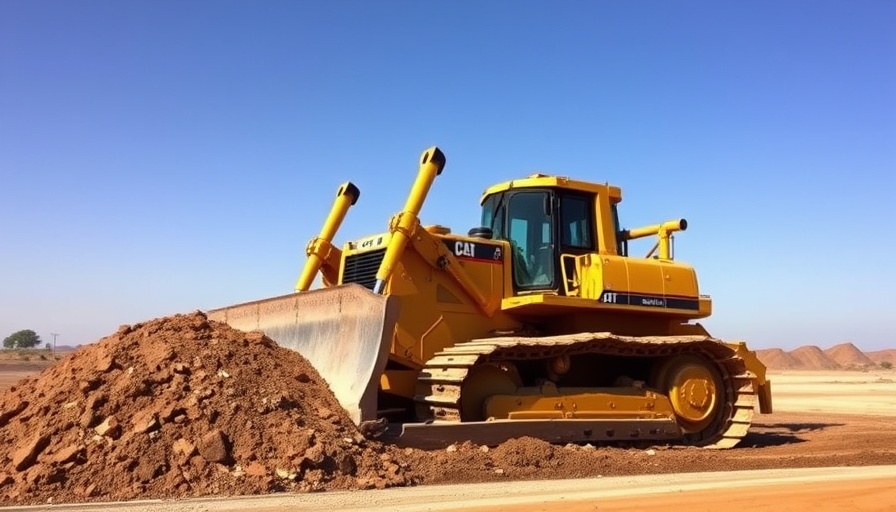
Understanding the Impacts of Trump's New Budget on Contractors
The $3.4 trillion federal budget law signed on July 4 by President Trump is being hailed as a significant win for the construction industry. Contractor groups like the Associated General Contractors of America applaud the bill for preventing a potential 20% tax increase that would have drastically affected the construction sector.
This legislation not only avoids a tax hike but also introduces long-awaited tax certainties that could enable companies in the construction realm to invest in workforce expansions and operation launches effectively. With the elimination of federal income taxes on overtime pay, workers stand to benefit while acquiring new equipment becomes economically advantageous due to heavier tax deductions.
Benefit Breakdown: Permanent 100% Bonus Depreciation
One of the key highlights for contractors in this new budget law is the permanent restoration of 100% bonus depreciation. Previously, depreciation on equipment purchases was on a decline, scheduled to drop all the way to 40% by 2025 before phasing out entirely in 2027. Now, firms can take full advantage of this provision, similar to what was set in the 2017 Tax Cuts and Jobs Act.
The restoration of the full bonus depreciation allows construction companies to write off the entire investment on new and used equipment, significantly improving cash flows and encouraging reinvestment in tools and technology essential for modern construction.
Increased Expensing Caps: A Step Forward
The new law also raises the Section 179 expensing cap for equipment to $2.5 million, with a phaseout limit of $4 million. This is a notable increase from the previous caps, which were set at $1.25 million and a $3.13 million phaseout. This enhancement means that contractors can expense a greater amount in the same fiscal year, encouraging them to upgrade their machinery, trucks, and even software crucial for operational efficiency.
Limitations: Missing the Mark on Clean Energy Projects
Despite the many benefits, contractor groups voiced concerns about certain gaps in the law, especially regarding the funding for the Highway Trust Fund and the preservation of tax breaks associated with clean energy projects. As environmental awareness becomes integral to modern construction, the inability to secure these benefits creates a dilemma that contractors will need to navigate carefully in their future projects.
Impact on Workers and Labor
Workers are likely to feel the positive impacts through the elimination of federal income tax on overtime pay—potentially raising take-home salaries and instilling a sense of value among laborers. Enhanced wages without the looming threat of tax increases can amplify morale, which is crucial in the often-demanding construction industry.
Concluding Thoughts: Embracing the New Opportunities
The new budget law presents a fresh slate for the construction industry with significant savings and opportunities for growth. Contractors now find themselves at a crossroads where they must align their strategic goals with both the monetary benefits offered through tax reliefs and the operational challenges posed by gaps in funding for crucial projects. This nuanced understanding of how the budget impacts operational dynamics will drive future decisions on investments and workforce management.
As the construction landscape continues to evolve with these new law implications, contractors must stay informed and adapt strategies to leverage benefits effectively. Engage with local contractors’ associations to remain updated on best practices, regulatory changes, and community efforts that can complement these newly bestowed opportunities.
 Add Row
Add Row  Add
Add 




Write A Comment